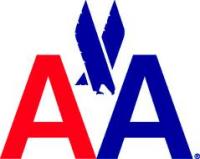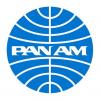Actually, it looks like the data in the game uses kg/hr for fuel flow.
For example, a 747-8 has a max range of 7472 miles with a full load. Divide that by the speed, 570 mph, and you get a number around 13 hours.
For fuel calculations, a 747-8 has a fuel capacity of 63,034 gallons. To convert that to pounds, jet fuel weighs about 62.5% as much as water (which weighs 8lbs/gal), meaning you will multiply the 63,034 gallons by 5 to get 315,170 lbs of fuel. If the fuel flow listed in the game (53,200) were in lbs/hour, then the maximum flight time would be around 6 hours, with a range of about 3,377 miles. Instead, I figure the fuel flow is in kg/hr, which would mean it is 2.2 times what the lbs/hr value is. So we divide the fuel flow (53,200) by 2.2 to get roughly 24,182 lbs/hr (note this is consistent with what pilots have said the fuel flow is, around 12 tons/hr). Now we divide the fuel weight by the actual lbs/hr value (315,170 / 24,182) and you get a number that comes out to about 13 hours, approximately matching the max range.
So the fuel efficiency of a 747-8 is going to be about 70.1 lbs/seat for every 1000 miles. Doing the same calculations with an Airbus A380 yields about 69.46 lbs/seat/1000mi.
Though I have noticed some inconsistency between the fuel range hours (max fuel / fuel flow) and the average speed hours (max range / avg speed) for different aircraft. This shouldn't affect the actual fuel efficiency calculations, though.
I still believe the fuel is quoted in lbs in the game, although I'm not entirely sure.
You should note that the "fuel flow" figures used in the game are almost assuming you are running the plane at full throttle, so trying to compare the actual capacity of a 748 and then apply the "game numbers" is going to make it seem as if you plane won't make it anywhere.
When I compared the numbers in the ICAO website for a GE90-115B in the game vs the real data, the data is dead on assuming a 90% thrust or so.
Also, I think you may have applied the formula to convert kgs to lbs the other way. remember 1kg = 2.2 lbs, therefore, 53,200 kgs = 117,040 lbs, what you used is the way you would convert from lbs to kg. which would give you 24,182 lbs
All this to say, it doesn't matter if the data in the game is in kg or lbs, in then end as long as you use the same stick to measure every plane you are going to get an accurate comparison of fuel efficiency among planes.
Perseco, Pacific Airways:
I'd be happy to slot this information into a Google Doc spreadsheet (similar to OG's) for ease of browsing. Let me know.
Hey QK, I would love to put it somewhere, but first we need help into getting the fuel efficiency tables out of AE so that we can create the calculation for all the planes. Do you know if we can get that? Otherwise, doing it manually will be cumbersome!

 Sign In
Sign In Create Account
Create Account

 Find content
Find content





